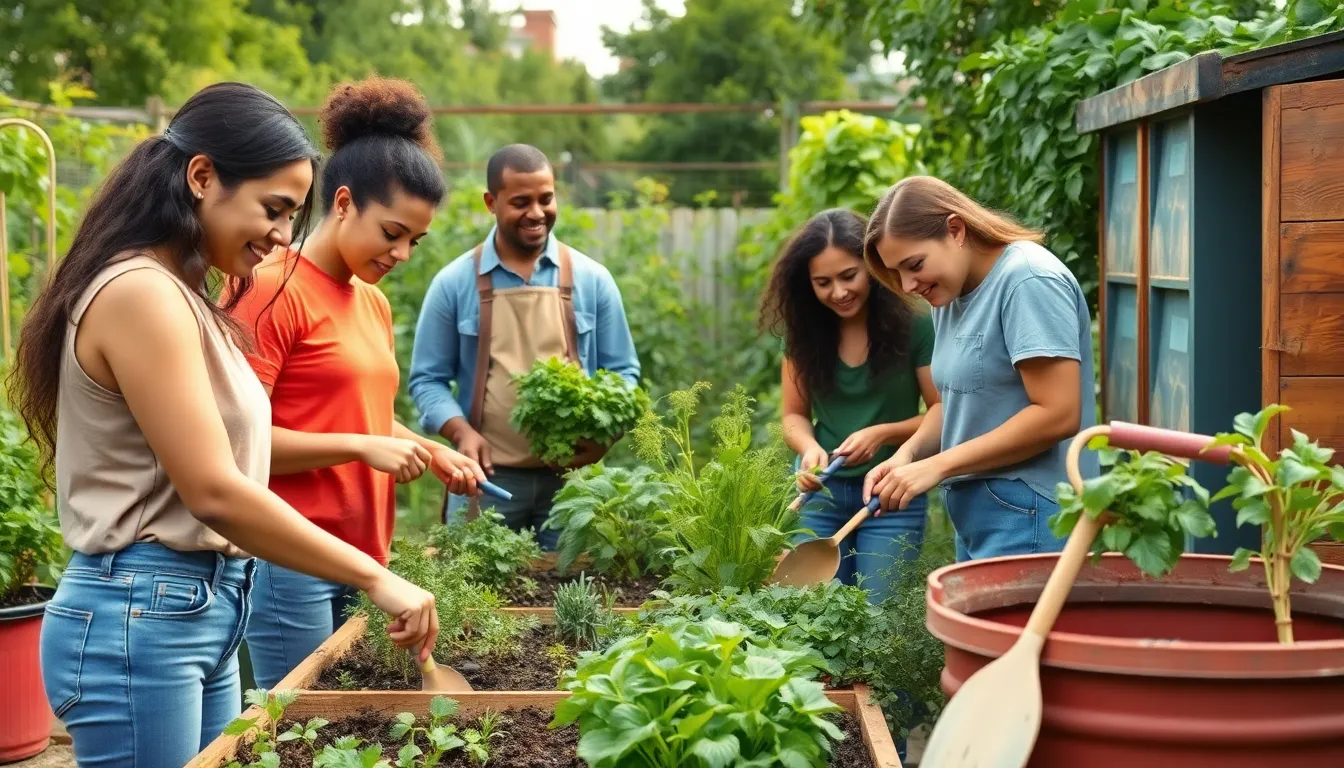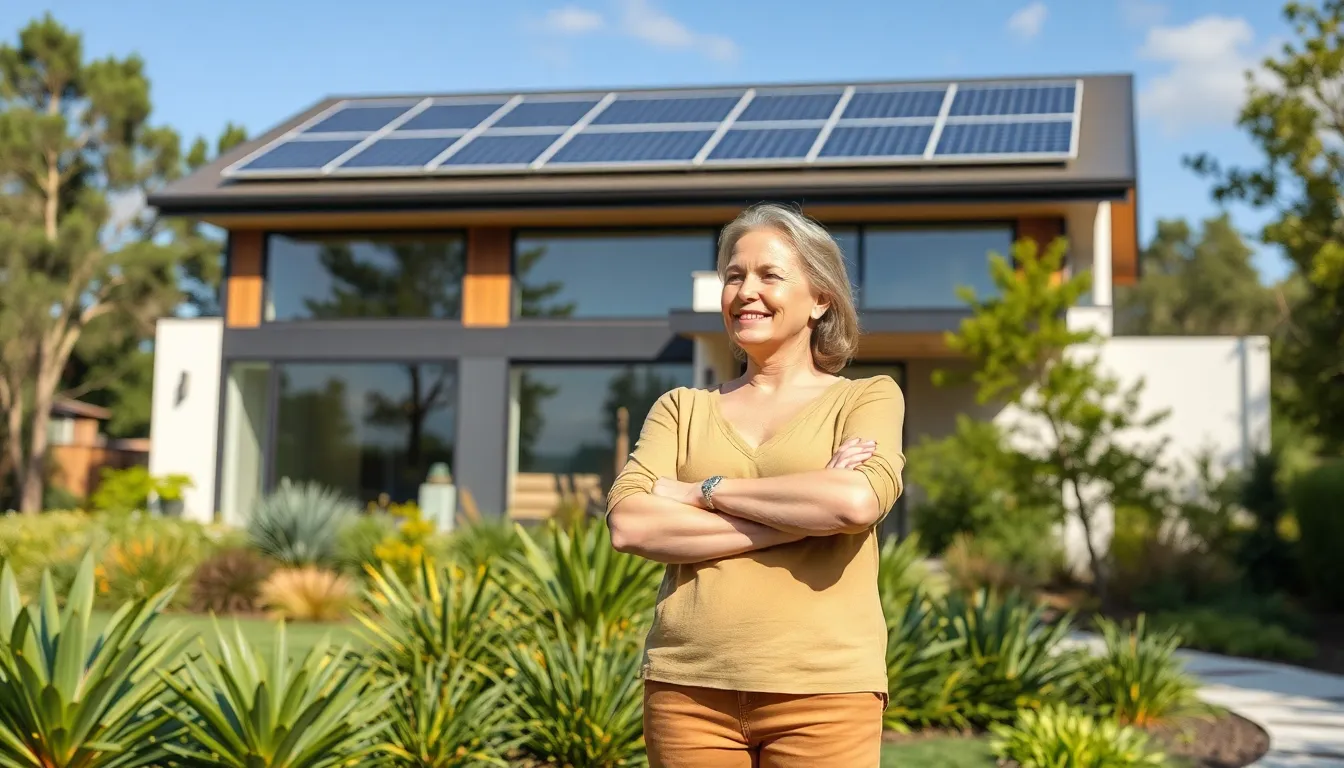Table of Contents
ToggleIn a world where plastic straws seem to have a vendetta against sea turtles, embracing green living isn’t just trendy—it’s essential. Picture this: a life where your morning coffee doesn’t come with a side of guilt and your home feels like a cozy eco-haven instead of a landfill. Green living essentials are here to save the day, one reusable bag at a time.
Understanding Green Living Essentials
Green living emphasizes making choices that reduce environmental impact and promote sustainability. By adopting eco-friendly habits, individuals contribute to a healthier planet and a more balanced lifestyle.
What Is Green Living?
Green living refers to an approach that focuses on minimizing waste and conserving resources. This lifestyle encourages the use of sustainable materials, energy-efficient appliances, and renewable energy sources. It includes practices like recycling, composting, and choosing local produce. Individuals who embrace green living often prioritize sustainable transportation options, such as biking or using public transit. Teaching others about these practices fosters a community-wide commitment to environmental responsibility.
Importance of Sustainable Practices
Sustainable practices play a crucial role in combating environmental degradation. They reduce carbon footprints and lower pollution levels. Engaging in activities like supporting local farmers helps maintain biodiversity. Additionally, using energy-efficient products decreases reliance on fossil fuels. Communities that adopt these practices create healthier living environments. Engaging businesses in sustainability efforts encourages them to adopt eco-friendly policies. The cumulative effect of these practices significantly benefits future generations.
Key Components of Green Living Essentials

Green living essentials focus on reducing environmental impact through mindful choices. The following components play a vital role in achieving a sustainable lifestyle.
Energy Efficiency
Energy efficiency enhances both comfort and conservation. Utilizing energy-efficient appliances significantly reduces electricity consumption compared to traditional models. Switching to LED lighting can decrease energy usage by up to 75%. Additionally, incorporating smart home technologies allows for better energy management. Individuals can monitor and adjust their energy use, further decreasing waste. Investing in proper insulation and energy-saving windows contributes to reduced heating and cooling costs. Each of these steps leads to a lower carbon footprint and supports a cleaner environment.
Waste Reduction
Waste reduction plays a crucial role in combating pollution and resource depletion. Adopting a zero-waste philosophy encourages individuals to minimize single-use items. Composting allows organic waste to decompose naturally, enriching soil rather than ending up in landfills. Utilizing reusable containers and bags replaces disposable options, significantly cutting down on plastic waste. Participating in community recycling programs enhances awareness and promotes responsible disposal of materials. These practices collectively foster a culture of sustainability and contribute to healthier ecosystems.
Sustainable Transportation
Sustainable transportation options have a significant impact on carbon emissions. Walking or biking for short distances eliminates the need for motor vehicles and reduces traffic congestion. Public transportation provides an effective alternative for larger commutes, minimizing individual carbon footprints. Carpooling with others further lowers greenhouse gas emissions. Selecting electric or hybrid vehicles offers eco-friendly choices for those who rely on cars. Each of these methods supports cleaner air and promotes a healthier lifestyle.
Practical Tips for Implementing Green Living Essentials
Adopting green living essentials can transform everyday life. Implementing practical changes makes a significant impact.
Home Improvements
Enhancing energy efficiency starts with small home upgrades. Installing LED bulbs reduces energy use by up to 75% compared to incandescent bulbs. Sealing windows and doors minimizes drafts, subsequently lowering heating and cooling costs. Incorporating smart thermostats allows for better temperature control, promoting energy conservation. Utilizing low-flow faucets and showerheads decreases water consumption without sacrificing performance. Selecting sustainable materials during renovations promotes a healthier living environment.
Eco-Friendly Products
Choosing eco-friendly products benefits both consumers and the planet. Opting for biodegradable cleaning supplies reduces harmful chemical exposure and supports compostable practices. Selecting reusable items, such as stainless steel water bottles and beeswax wraps, significantly cuts down on single-use plastics. Shopping for organic skincare and personal care products ensures fewer synthetic pesticides and better overall health. Supporting local brands creates a smaller carbon footprint while fostering community engagement around sustainability. Making informed purchases directly influences environmental preservation.
Mindful Consumption
Practicing mindful consumption encourages thoughtful decision-making. Prioritizing essential items prevents unnecessary purchases and reduces waste. Opting for secondhand goods not only saves money but also extends product lifecycles. Researching manufacturers’ environmental policies promotes accountability in production practices. Engaging in community swaps or sharing programs fosters resourcefulness and collaboration. Staying aware of one’s consumption patterns directly aligns with responsible living.
Creating a Green Living Community
Building a green living community fosters sustainability and encourages collective action. Such communities work together to share resources and ideas.
Local Initiatives
Local initiatives play a crucial role in promoting green living. They often include community gardens, where residents grow organic produce, reducing reliance on store-bought fruits and vegetables. Educational workshops frequently cover topics like composting and energy efficiency, equipping residents with practical knowledge. Repair cafés become popular spots for fixing broken items, helping minimize waste while bringing people together. Initiatives like neighborhood clean-up days encourage participation in environmental stewardship, leaving public spaces cleaner and stronger. Collaborations with local businesses can provide discounts on sustainable products, further incentivizing eco-friendly choices.
Community Engagement
Community engagement strengthens the commitment to sustainable practices. Organizing events fosters connection and collaboration among residents. Potlucks featuring local ingredients encourage the sharing of sustainable recipes while promoting local farms. Informal gatherings, such as nature walks, raise awareness of local ecosystems. Online forums or social media groups can facilitate conversations about green living strategies, allowing for idea exchange. Encouraging participation in local decision-making processes helps shape policies supporting sustainability, ensuring everyone’s voice is heard. Ultimately, engaging with one another creates a supportive atmosphere that nurtures a culture of eco-consciousness.
Embracing green living isn’t just a trend; it’s a vital commitment to protecting the planet. By making conscious choices and adopting sustainable practices, individuals can significantly reduce their environmental impact. Each small action contributes to a larger movement toward a healthier ecosystem and a more sustainable future.
Creating a community focused on green living amplifies these efforts. Together, people can share resources, knowledge, and support, fostering a culture of sustainability that benefits everyone. As awareness grows and collective action strengthens, the path to a greener world becomes clearer. It’s time to take those essential steps toward a more eco-friendly lifestyle and inspire others to join in the journey.





